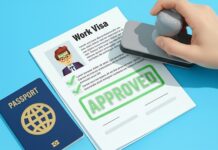If you’ve been grinding through the UK or Canada immigration maze, hitting walls at every turn, it’s time to pause and rethink your strategy. The truth is, those two destinations are overcrowded, their visa systems slow, and their approval rates unpredictable. Yet while everyone keeps chasing the same paths, other countries are quietly rolling out faster, more transparent routes to permanent residency — if you know where to look.
This guide walks you through five realistic options that skilled professionals are using right now to secure PR in two to five years. You’ll learn where your qualifications fit best, how to target accredited sponsors, and what steps to take next so your paperwork and timing don’t hold you back.
New Zealand — Green List: Straight to Residence or Work to Residence
If your occupation sits on New Zealand’s Green List, you’re already halfway there. This system rewards specific, high-demand skills with either a Straight to Residence visa or a Work to Residence route after two years of employment with an accredited employer. It’s one of the clearest pathways available, but you’ll need clean documentation and recognized credentials.
According to Erica Stanford, New Zealand’s Immigration Minister, “By having an English language requirement, migrants will be better able to understand their rights or raise concerns about an employer early.” Her statement is practical advice — improve your English fluency and have every professional registration ready before applying.
Germany — EU Blue Card to Settlement
Germany’s EU Blue Card remains one of Europe’s fastest and most structured routes to permanent residence. If you have a recognized degree and a solid job offer meeting the salary threshold, you can secure PR within 21 to 27 months — faster if you reach language level B1. Keep meticulous records of your payslips, insurance contributions, and work continuity.
“Germany’s Blue Card system was built to retain skilled migrants, not just fill temporary shortages,” says Dr. Martin Ruhs, migration policy researcher at Oxford University. In short, Germany wants you to stay, provided you meet the paperwork and language standards.
Ireland — Critical Skills Permit to Stamp 4
Ireland’s Critical Skills Employment Permit leads directly to long-term stability. After two years in a qualifying role, you can apply for Stamp 4 — a near-equivalent to PR — giving you the freedom to live and work without needing another permit. Ireland’s system favors roles that fill genuine gaps, such as tech, healthcare, and engineering.
If your occupation appears on Ireland’s Critical Skills list, get an offer from a licensed employer, keep precise employment records, and mark your start date — those 24 months count down fast.
Australia — Employer Nomination Scheme (ENS 186)
Australia’s ENS 186 route lets sponsored workers transition from temporary visas to permanent residency once they’ve met eligibility requirements. The key is choosing an employer who consistently sponsors PR transitions, not short-term hires.
As Sarah Johnson, an Australian migration agent and author of Work Down Under: The New Skilled Route to Residency, explains, “Most delays come from mismatched paperwork between employer and employee. Consistency is everything.” If you’re serious, get your skills assessed early and keep your nomination documents aligned with your visa timeline.
Netherlands — Five-Year Route to Long-Term EU Residence
In the Netherlands, time spent on a Highly Skilled Migrant visa or EU Blue Card counts toward your five-year requirement for long-term EU residency. Every extension, contract, and registration must align perfectly — even a gap can reset the clock.
According to Christian Dustmann, Professor of Economics at University College London, “Successful integration is built on stable, continuous employment — that’s what Europe’s migration systems reward.” Keep contracts, tax records, and employer letters consistent from day one.
How to Position Yourself for Any of These Routes
If you want results, act like a candidate in a long recruitment process. Focus on three things: accredited sponsors, complete documentation, and clear communication. Employers with prior sponsorship experience are your best entry point. Keep verified references ready, and store all vital documents — passport, degree certificates, police clearances, and references — in both digital and physical formats.
Don’t waste time with recruiters who “might sponsor later.” They rarely do. Speak directly to HR or immigration teams, and be skeptical of anyone promising fast-tracked results without a legitimate sponsor name or link to an official program.
Taking the First Step
This week, run your exact job title through each country’s eligibility list — the Green List, Critical Skills, and EU Blue Card roles. Create one updated CV tailored for visa sponsorship, matching your experience to the keywords used in those lists. Then contact one employer or recruitment agency already licensed to sponsor. That single action can turn your research into momentum.
As Professor Stephen Yale-Loehr of Cornell Law School says, “Wherever immigration systems are jammed, alternative destinations that deliver predictability will attract the best talent.” You can be one of those people — if you stop waiting in line and start targeting systems that actually work.
Disclaimer: This article is based on personal research. Always consult official immigration websites and verify requirements before submitting any application.
Discover more from MUZZLECAREERS
Subscribe to get the latest posts sent to your email.








